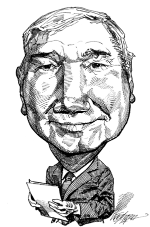Supreme Court of Canada rules Mr. Big confessions are presumptively inadmissible, but may be admitted if new evidence rule is satisfied.
Friday, August 01, 2014 - Filed in: Courts

The operation culminated with a meeting akin to a job interview between H and “Mr. Big”, the man purportedly at the helm of the criminal organization. During their meeting, Mr. Big interrogated H about the death of his daughters, seeking a confession from him. After initially denying responsibility, H confessed to drowning his daughters. Two days later, H went to the scene of the drowning with an undercover officer and explained how he had pushed his daughters into the water. He was arrested shortly thereafter.
At trial, H’s confessions were admitted into evidence. The trial judge denied H’s request for permission to testify with the public excluded from the courtroom. A majority of the Court of Appeal allowed H’s appeal and ordered a new trial. The Court of Appeal unanimously held that the trial judge erred in refusing to allow H to testify outside the presence of the public. A majority of the court also concluded that the Mr. Big operation had breached H’s right to silence under s. 7 of the Charter. The majority excluded two of H’s confessions, the one to Mr. Big and the one to the undercover officer at the scene of the drowning. However, the majority concluded that H’s bald confession was admissible and ordered a new trial. "
The S.C.C. held (5:2) that the appeal is dismissed.
Justice Moldaver wrote as follows (at paras. 66-67, 81, 84-86, 150-151):
"A threshold issue raised by this appeal is whether the existing framework adequately protects the rights of those subject to Mr. Big investigations. The Crown contends that no further protections are needed and that the law as it stands strikes a proper balance between the accused’s rights and the need for effective policing. By contrast, the respondent and amicus curiae submit that Mr. Big confessions present unique dangers that must be addressed by placing a filter on their admissibility.
I agree with the respondent and amicus curiae. In my view, the law as it stands today provides insufficient protection to accused persons who confess during Mr. Big operations. Three concerns lead me to this conclusion.
…
Having determined that the law must respond to the risks inherent in Mr. Big confessions, the more difficult question is what form that response should take. Mr. Big operations raise three distinct concerns — reliability, prejudice, and the potential for police misconduct — and we must ensure that trial judges have the tools they need to address all three of these issues.
…
In this section, I propose a solution that, in my view, strikes the best balance between guarding against the dangers posed by Mr. Big operations, while ensuring the police have the tools they need to investigate serious crime. This solution involves a two-pronged approach that (1) recognizes a new common law rule of evidence, and (2) relies on a more robust conception of the doctrine of abuse of process to deal with the problem of police misconduct.
The first prong recognizes a new common law rule of evidence for assessing the admissibility of these confessions. The rule operates as follows. Where the state recruits an accused into a fictitious criminal organization of its own making and seeks to elicit a confession from him, any confession made by the accused to the state during the operation should be treated as presumptively inadmissible. This presumption of inadmissibility is overcome where the Crown can establish, on a balance of probabilities, that the probative value of the confession outweighs its prejudicial effect. In this context, the confession’s probative value turns on an assessment of its reliability. Its prejudicial effect flows from the bad character evidence that must be admitted in order to put the operation and the confession in context. If the Crown is unable to demonstrate that the accused’s confession is admissible, the rest of the evidence surrounding the Mr. Big operation becomes irrelevant and thus inadmissible. This rule, like the confessions rule in the case of conventional police interrogations, operates as a specific qualification to the party admissions exception to the hearsay rule.
Second, I would rely on the doctrine of abuse of process to deal with the problem of police misconduct. I recognize that the doctrine has thus far proved less than effective in this context. While the problem is not an easy one, I propose to provide some guidance on how to determine if a Mr. Big operation crosses the line from skillful police work to an abuse of process.
…
The Court of Appeal excluded the respondent’s June 9 and 11 confessions and quashed his convictions. It ordered a new trial on the basis that the respondent’s April 10 confession was admissible, and that it provided a “sliver” of evidence upon which a jury could convict the respondent of murder (para. 258).
I have concluded that the April 10 confession must also be excluded. As such, it is doubtful whether any admissible evidence remains upon which a jury, properly instructed and acting reasonably, could convict. However, the final decision on how to proceed rests with the Crown. In the result, I would dismiss the appeal."
Note: This summary is drawn from Eugene Meehan’s SupremeAdvocacy Weekly Updates for the Law Community.


